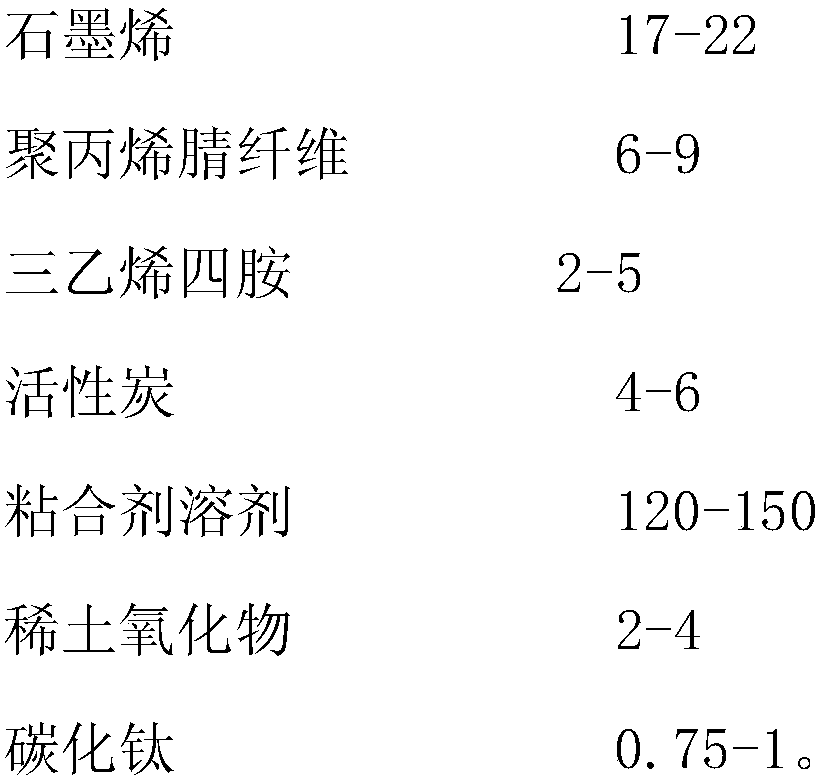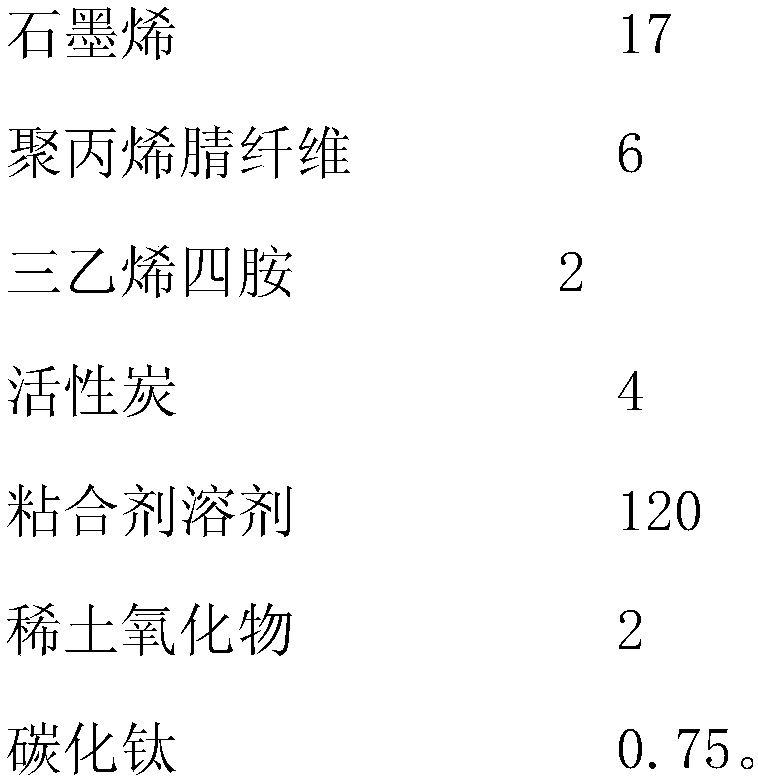Graphene conductive agent
A technology of graphene and conductive agent, applied in circuits, electrical components, battery electrodes, etc., can solve the problems of reduced electrode capacity, high price, large amount of addition, etc., to achieve increased capacity, improved cycle life, strong liquid absorption and liquid retention effect of ability
Inactive Publication Date: 2018-03-16
NANJING XUYURUI MATERIAL TECH CO LTD
View PDF6 Cites 1 Cited by
- Summary
- Abstract
- Description
- Claims
- Application Information
AI Technical Summary
Problems solved by technology
[0003] Lithium-ion batteries in the prior art mainly use conductive graphite, acetylene black and carbon nanotubes as conductive agents. Acetylene black is a chain composed of spherical amorphous carbon particles. It is currently the most widely used conductive agent with low price. , but in order to achieve the purpose of enhancing the mutual contact between electrode active materials, the amount of addition required is large, resulting in a decrease in electrode capacity; carbon nanotubes are linear one-dimensional carbonaceous materials, compared with acetylene black, carbon Nanotubes have better electrical conductivity and less addition, but currently carbon nanotubes are expensive and have the disadvantage of being difficult to disperse when used as a conductive agent
Method used
the structure of the environmentally friendly knitted fabric provided by the present invention; figure 2 Flow chart of the yarn wrapping machine for environmentally friendly knitted fabrics and storage devices; image 3 Is the parameter map of the yarn covering machine
View moreImage
Smart Image Click on the blue labels to locate them in the text.
Smart ImageViewing Examples
Examples
Experimental program
Comparison scheme
Effect test
Embodiment 1
[0020] The component mass fraction ratio between described graphene, polyacrylonitrile fiber, triethylenetetramine, activated carbon, binder solvent, rare earth oxide and titanium carbide is:
[0021]
Embodiment 2
[0023] The component mass fraction ratio between described graphene, polyacrylonitrile fiber, triethylenetetramine, activated carbon, binder solvent, rare earth oxide and titanium carbide is:
[0024]
the structure of the environmentally friendly knitted fabric provided by the present invention; figure 2 Flow chart of the yarn wrapping machine for environmentally friendly knitted fabrics and storage devices; image 3 Is the parameter map of the yarn covering machine
Login to View More PUM
 Login to View More
Login to View More Abstract
The invention discloses a graphene conductive agent. The internal composition components of the graphene conductive agent include, by mass, 17-22 parts of graphene, 6-9 parts of polyacrylonitrile fibers, 2-5 parts of triethylenetetraamine, 4-6 parts of activated carbon, 120-150 parts of an adhesive solvent, 2-4 parts of rare earth oxide and 0.75-1 part of titanium carbide. The graphene conductiveagent using the excellent conductivity of the graphene improves the capacity of an electrode material, reduces the internal resistance of a battery, prolongs the cycle life of the battery and saves the cost, so the lithium ion battery is competitive, and has strong electron conduction ability and uniform heat conduction, and the graphene conductive agent has strong liquid absorbing and preservingability when doped into the lithium ion battery.
Description
technical field [0001] The invention relates to the technical field related to graphene, in particular to a graphene conductive agent. Background technique [0002] As a new type of high-energy secondary power supply, lithium-ion secondary batteries have the advantages of large specific energy, stable discharge voltage, high voltage, good low-temperature performance, no pollution, superior safety performance, long storage and working life, and high utilization rate. [0003] Lithium-ion batteries in the prior art mainly use conductive graphite, acetylene black and carbon nanotubes as conductive agents. Acetylene black is a chain composed of spherical amorphous carbon particles. It is currently the most widely used conductive agent with low price. , but in order to achieve the purpose of enhancing the mutual contact between electrode active materials, the amount of addition required is large, resulting in a decrease in electrode capacity; carbon nanotubes are linear one-dimen...
Claims
the structure of the environmentally friendly knitted fabric provided by the present invention; figure 2 Flow chart of the yarn wrapping machine for environmentally friendly knitted fabrics and storage devices; image 3 Is the parameter map of the yarn covering machine
Login to View More Application Information
Patent Timeline
 Login to View More
Login to View More Patent Type & Authority Applications(China)
IPC IPC(8): H01M4/62H01M10/0525
CPCH01M4/624H01M4/625H01M10/0525Y02E60/10
Inventor 朱洋邵蓉
Owner NANJING XUYURUI MATERIAL TECH CO LTD
Features
- R&D
- Intellectual Property
- Life Sciences
- Materials
- Tech Scout
Why Patsnap Eureka
- Unparalleled Data Quality
- Higher Quality Content
- 60% Fewer Hallucinations
Social media
Patsnap Eureka Blog
Learn More Browse by: Latest US Patents, China's latest patents, Technical Efficacy Thesaurus, Application Domain, Technology Topic, Popular Technical Reports.
© 2025 PatSnap. All rights reserved.Legal|Privacy policy|Modern Slavery Act Transparency Statement|Sitemap|About US| Contact US: help@patsnap.com



